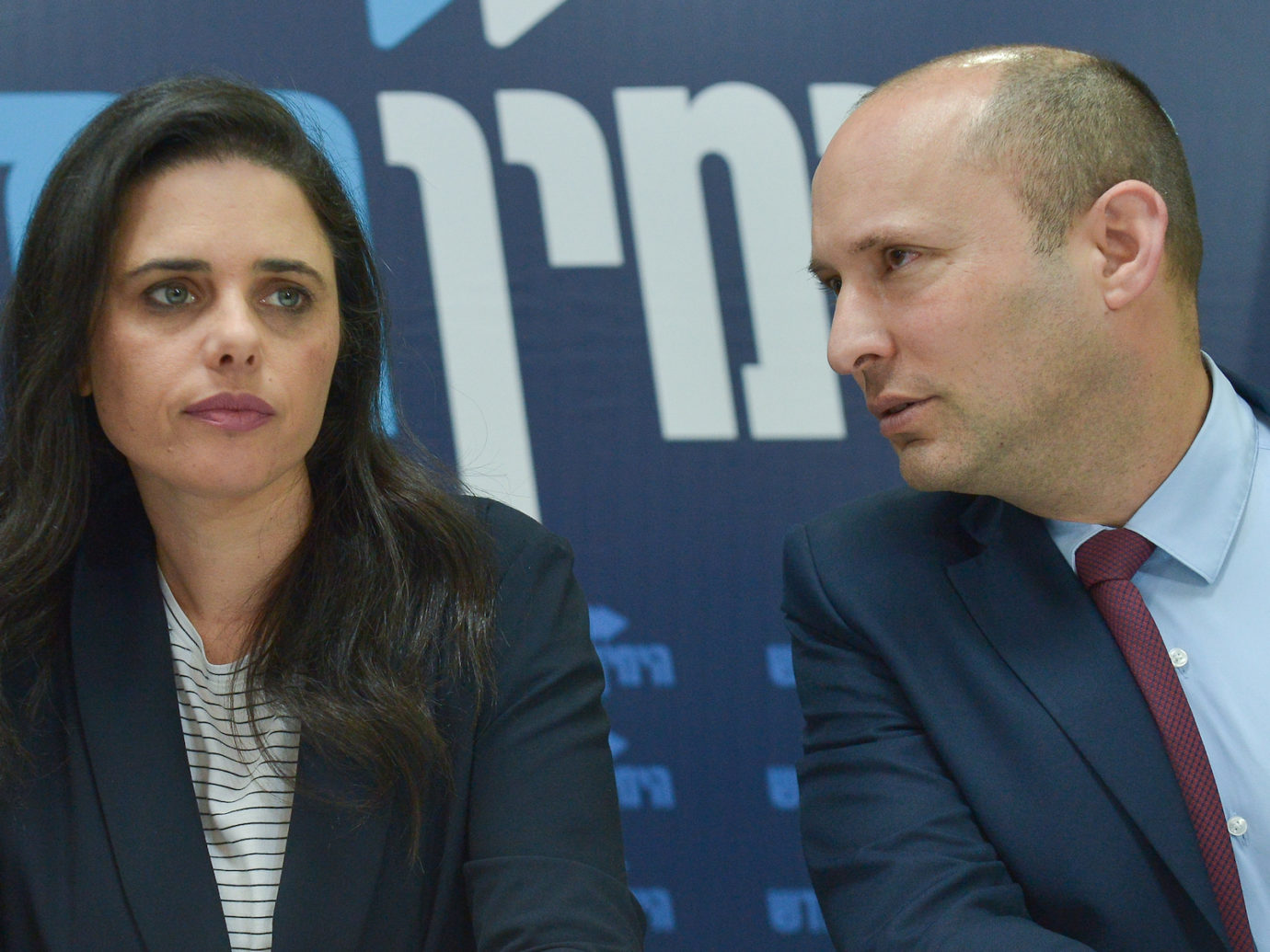 Israeli Education Minister Naftali Bennett (R), Justice Minister Ayelet Shaked (L), hold a press confrence of the New Right Political party, in Tel Aviv on March 17, 2019. Photo by Flash90
Israeli Education Minister Naftali Bennett (R), Justice Minister Ayelet Shaked (L), hold a press confrence of the New Right Political party, in Tel Aviv on March 17, 2019. Photo by Flash90 We call this format a Timesaver Guide to Israel’s Coming Elections. This will be a usual feature on Rosner’s Domain until next Election Day, September 17. We hope to make it short, factual, devoid of election hype, and of he-said-she-said no news, unimportant inside baseball gossip.
Bottom Line
Two weeks for mergers.
Main News
Talks about political mergers right and left and Arab continue. Deadline is near: the end of July.
Education Minister Peretz makes controversial remarks, and is harshly criticized, first on assimilation then on gays and lesbians.
Ehud Barak tainted by relations with Jeffrey Epstein.
Developments to Watch
Merger on Left: Labor’s Peretz holds most of the cards. Will he agree to take Barak as his number two? Will he form an alliance with Meretz and leave Barak on the sidelines? Clearly, he does not want Barak. But there is pressure on him not to be the one to keep the camp in a split situation.
Merger on right: The more the United Right’s Peretz finds himself in trouble (assimilation, gays), the more the need for him to accommodate popular former minister Ayelet Shaked. If two weeks ago it was easier for Peretz to insist on the top spot, his cards are currently much weaker.
Merger on right: The PM did not yet decide whether a united right is better for the camp – or maybe a divided right is the one more likely to gain more seats. Unity is risk-free but could push away some voters (if the party seems to be too religious, or not religious enough). Division accommodates more tastes, but is risky – one of the parties, or even both, might not cross the electoral threshold.
Merger of Arab parties: This is the most likely to happen without much delay and last-minute drama. All parties want it, the voters want it.
The Blocs and Their Meaning
The two blocs, one of parties for Netanyahu and one of parties against him, are still stuck bellow the 60-seat line.

Is this likely to change? Here is a graph of averages of seats of the parties, for the last 5 polls, 10 polls and 20 polls. What do we see in this graph? We see stability. The two largest parties slightly decline, and most other parties stay at about the same number. The trend? There is no trend. If mergers on the right and the left do not prompt meaningful change, there will be only two options after election day. Option 1: Lieberman decides to join a right-wing government. Option 2: Unity government.

A Party to Watch
Ehud Barak’s Democratic Israel had a lot of energy and some promise, but the general trendline since its start is downward. If Barak decides to run on his own, the center-left camp could lose seats when he doesn’t cross the electoral threshold.
























 More news and opinions than at a Shabbat dinner, right in your inbox.
More news and opinions than at a Shabbat dinner, right in your inbox.